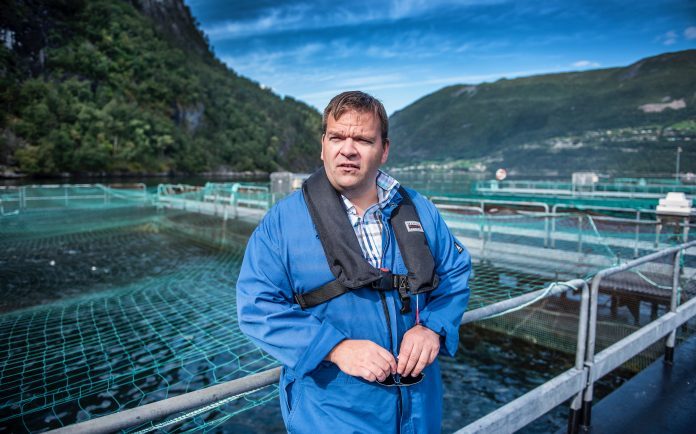He started as a herring fisherman at the age of 12. This year, Roger Hofseth says he thinks he’ll see EUR 304.3 million in turnover.
Last year, Hofseth bought Hofseth International from Fjordlaks Aqua, now called Hofseth Aqua. It was a milestone for a company founder who had worked with fish and seafood his whole life and got a jumpstart on his career.
First big return
“It was 1987. I was 12 and got to go herring fishing with my brother as an extra crewman. I should have gotten half the lot, but I must have put in a decent effort, because I got as much as the others — 36,000 kroner. That was a lot of money back then, recalls Roger Hofseth, now majority owner and general manger of Hofseth International.
That amount is now worth 80,000 2017 kroner (EUR 8,067), and it made that kid financially independent. “I grew up in a totally normal family that wasn’t especially rich. Dad was a seaman. Mom ran the office. After I got that herring trove, I never again asked my parents for money. I took care of myself and got a taste of business.”
Ambition’s anvil
On Ellingsoy island, where he grew up, it was easy for teenagers to secure their own earnings. “There was a lot of klippfisk (airdried, salted cod) and mackerel factories. Anyone who cared to work got work, says Hofseth, who worked on fishing boats and fishery-related jobs and studied business in community college.
Early in the Year 2000, he started his own fish distribution company by buying a shuttered dairy plant he turned into a factory. Things started quickly from there. “We joined forces with Seafood Farmers in 2008 and founded Hofseth International. Turnover rose tenfold in nine years.”
American hit
Hofseth learned it was a shame to send great raw material out of the country. The firm’s strategy has been to retain in Norway as much value-creation as possible, and he’s become one of the Europe’s largest salmon processors with factories in Vanylven, Valeroy and Aalesund.
“We’re the biggest among Norwegian companies that export to the USA. There used to be a tariff on whole fish there, but not on the processed products that we have so many of. We saw the opportunity, and secured for ourselves an important market.”
The Hofseth way is to use the whole fish. They extract proteins and calcium from the spine, head and skin and then turn that over to health products and pet food.
“I’ve always believed that we process too little of the salmon and trout farmed in Norway. Our growth shows that people want finished products from Norway.”
Today, the company’s processing capacity is 85,000 tonnes. About 95 percent of products are exported, mainly to North America.
Big in Japan
Hofseth is a local patriot. He wasn’t pleased when a lot of activity moved from Aalesund to Bergen or Trondelag County. He had long seen great potential in Fjordlak, but he had to come up with a billion kroner to buy the traditional trout business.
“We have a lot of good customers, including Alliance Seafood in Japan, where there’s low interest (on borrowing) and access to capital. I aired the idea of starting a joint-venture to buy Fjordlaks (thinking), you have to be able to ask and at least get a ‘No’. But they said ‘Yes’, and we threw ourselves all over the place (in celebration).”
The Fjordlaks brand is popular in Japan and other parts of Asia and is delivered frozen to restaurants and the sushi market. Alliance Seafood is a big player in the country with 50 refridgerator houses in its distribution network.
Hofseth International had a turnover of 1.8 billion kroner in 2016. This year, the Hofseth Group reckons it will pass the 3-billion-kroner mark after the Fjordlaks acquisition.
How’s he done it? Hofseth’s worked hard. He’s focused optimistically and hasn’t been afraid to invest. He’s also had alot of good helpers. Geir-Even Haaberg, Hofseth International general manager, has been with him since the start. Others have, too.
“These are friends that I’ve grown up with on Ellingsoya that I worked with earlier, and who are now shareholders. We’re an incredibly good team!”

